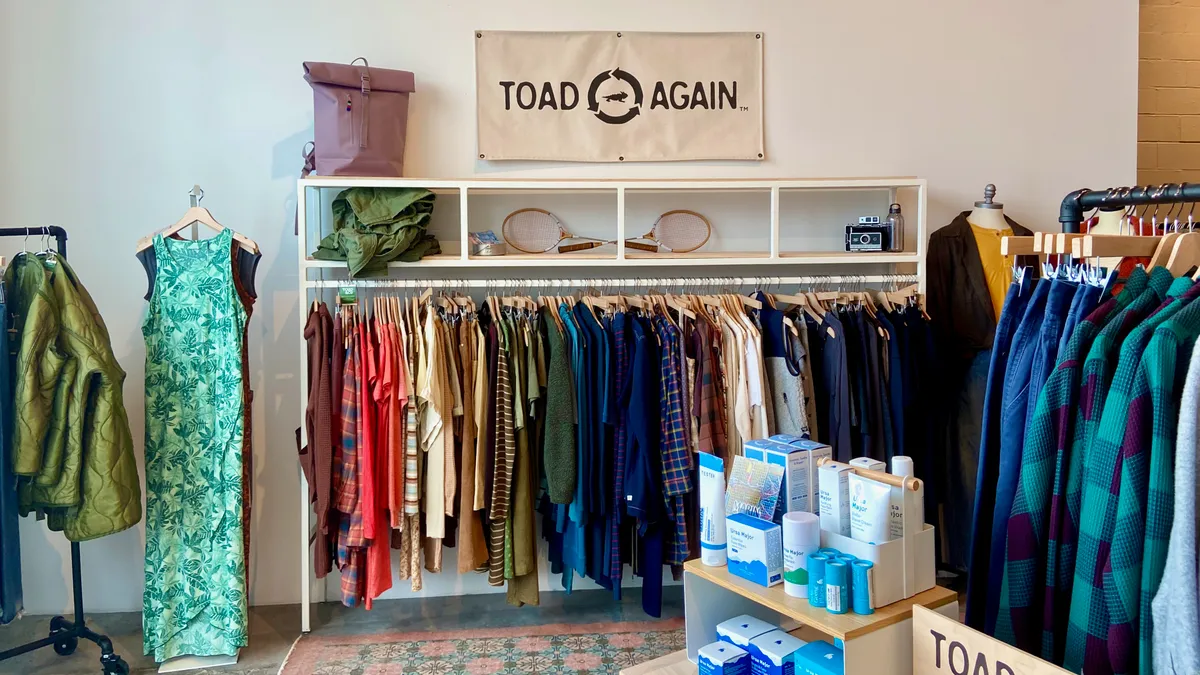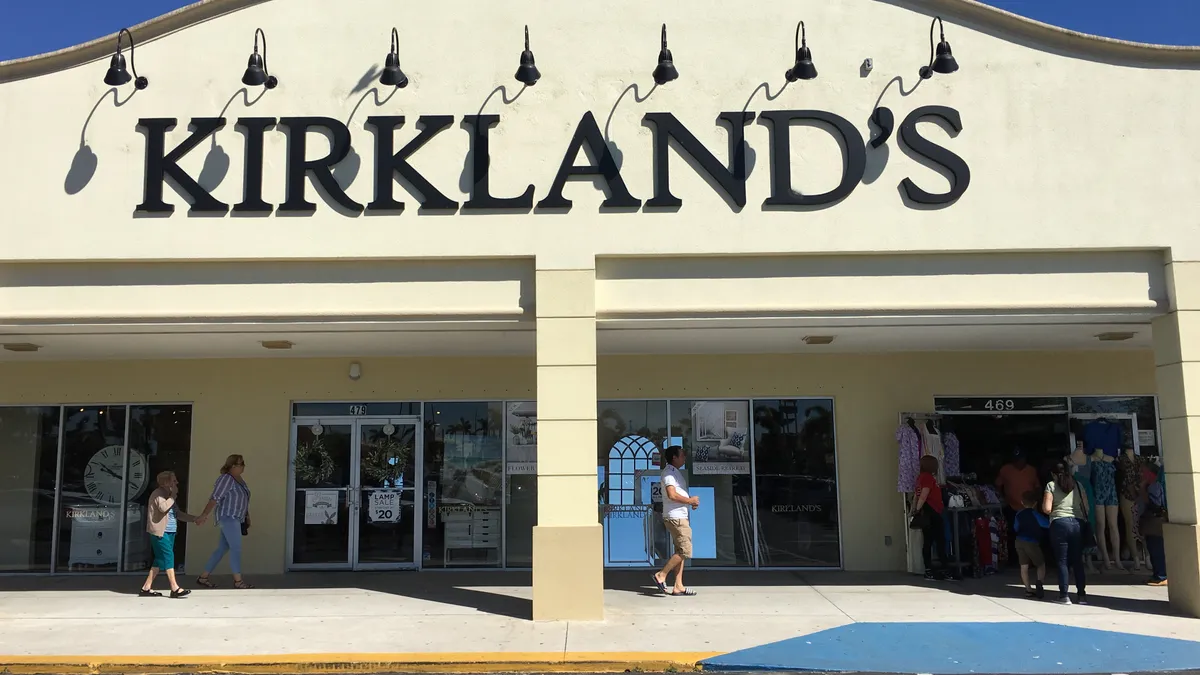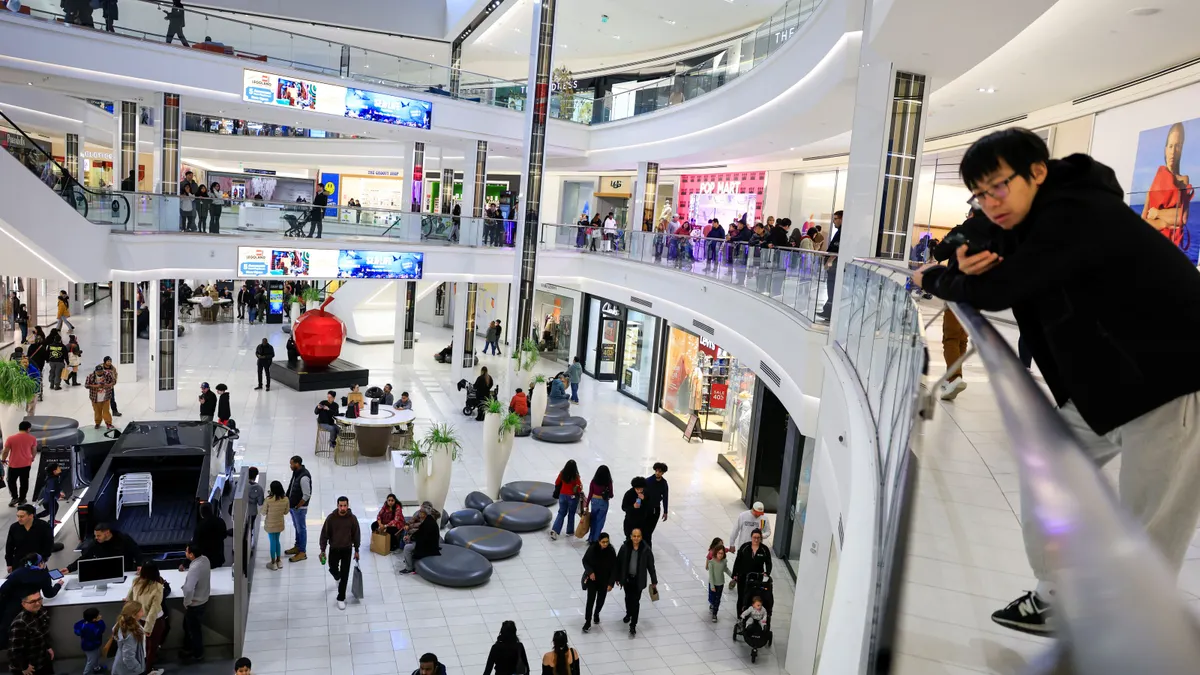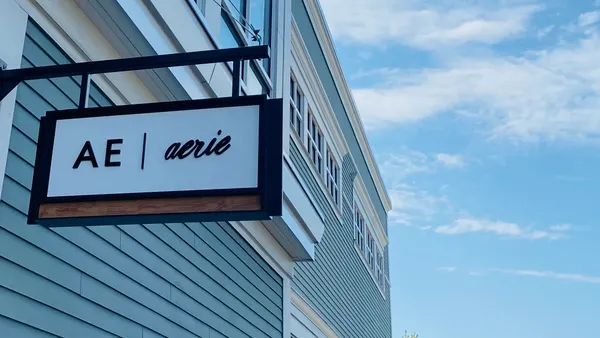Ikea appears to be going all-in on its strategy to attract more urban millennials by inching further away from its iconic warehouse-like spaces — at least in part.
Earlier this month, the Swedish home goods retailer began construction on a new store concept in Vienna, Austria. The seven-story building, located at the Westbahnhof train station, is set to be completed by 2021, according to the company's website.
However, unlike traditional Ikea locations that encourage consumers to come to stores and haul their purchases away with them, this store takes a different approach. With no parking lot in the plans, the Vienna location comes in stark contrast to its warehouse counterparts (like the Burbank, California, store that has 1,700 parking spaces).
“The concept focuses on the current megatrends and takes into account the dramatically changed shopping behavior as well as a new form of mobility without a car,” the company said on its website. “Customers have little time and appreciate convenience.”
Though shoppers will be able to walk out with some items in hand, products deemed too large to carry home will be delivered to them within 24 hours, the company said.
Ikea recently tested smaller-format stores with its urban planning studios in Paris, London and most recently on New York's Upper East Side. The stores offer consumers the opportunity to sit down with a consultant to learn about Ikea's products and plan out a design project. What they don't offer is the ability to walk out of the store with merchandise.
The Vienna store may align closer with a planned location in New York's Queens borough, which is set to open sometime this summer. That location is about a third of the size of a traditional Ikea store, but allows consumers to purchase items both in store and order for delivery.
Ikea's strategy to lure a younger set of customers living in cities has recently heated up. Last June, the retailer partnered with startup Ori to build out robotic furniture that helps alleviate the pains of living in tight spaces, and prior to that Ikea announced it would begin testing furniture leasing options in 30 markets this year.
The discussion forum on RetailWire asked its BrainTrust panel of retail experts the following questions:
-
Would it make sense for Ikea to open stores in U.S. cities that have no parking lots?
-
Do you see more retailers opening concepts that rely on shipping items ordered in stores to the homes of customers?
Here are seven of the most insightful comments from the discussion. Comments have been edited by Retail Dive for length and clarity.
In big cities, delivering everything isn't new
Gene Detroyer, Professor, International Business, Guizhou University of Finance & Economics; Executive Director, Global Commerce Education: We have a new Ikea not far from where I am currently in NYC. There are no parking spaces. But why do you need them? They will deliver everything you buy.
Before we had Ikea in the city, we bought an Ikea kitchen in NJ. We rented a car (I haven't owned a car for 15 years, yea!) drove out and picked out the components. They delivered everything, from the smallest to the largest.
In Manhattan, this is not a new phenomena. It seems everybody delivers and has as long as I have lived here.
'A win-win for all parties'
Michael Terpkosh, President, City Square Partners LLC: I too love this concept. The multi-generational return to urban cores makes this type of store a great fit for U.S. metro areas. As baby boomers retire they don't want to have to lug around big, heavy boxes. Especially if they can get delivery and set-up. Young generations want the convenience without the sweat and without driving to the store. I see this as a win-win for all parties.
Urban businesses can thrive given changing trends
Bob Amster, Principal, Retail Technology Group: If Ikea (and any other retailer) can consistently deliver as promised, the urban stores can thrive without parking lots or garages. Trends are changing. Today's labor force wants to live in urban areas, ditch the automobile, walk or take public transportation. That all spells out that even retailers of furniture can do business in urban areas and everybody (the consumer, the retailer, and the environment) wins.
Convenience reigns
Kenneth Leung, Retail and Customer Experience Expert: I think this makes sense because of the convenience factor, some people want to shop close to home or online rather than drive out from urban centers. Given a lot of Ikea's target audience is small home in urban areas, with a proper delivery network, a location without parking on top of a transit village should work well.
Goes against what consumers have become accustomed to
Georganne Bender, Principal, KIZER & BENDER Speaking: Ikea sells a lot more than furniture, it sells home decor, accessories and grocery items. I can't speak for what goes on in other countries but I can tell you that here in the U.S. people still drive. Maybe not in big cities, but certainly in the suburbs.
Consumers go to Ikea because we can take what we buy home with us that day. You can't get near the Ikea closest to my house, especially on weekends, because the parking lot is always full to capacity. I get that Ikea is trying to help the environment, and I applaud that, but that's not how people shop here. Why mess with success?
The format doesn't cater to all shoppers
Richard Hernandez, Director, Affiliated Foods, Inc.: This is definitely an interesting format — it seems a lot easier to shop and like a better option for urban areas, but as Georganne mentioned, this is not how the suburban shopper shops Ikea. The Ikea nearest to me is packed towards the end of the week and all weekend. Maybe there could be an intermediate format that would still offer the best of this format and the best of the 300,000 square foot format?
Supporting cars are a major expense
Ken Lonyai, Consultant, Strategist, Tech Innovator, UX Evangelist: Presuming that there's quality research behind this, it makes sense to me. Parking lots/decks are major expenses and lots are a real blight in cities. Consumers are being offered options, so it's worth a real-world try.






















